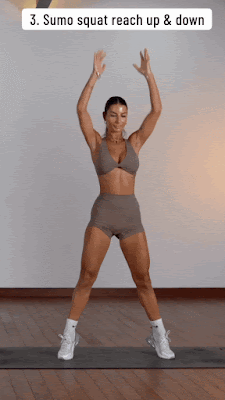Full Body Workout at Home Without Equipment: Effective Exercises for Strength and Fitness
Achieving a full-body workout at home without equipment is not only convenient but also highly effective for building strength, improving cardiovascular health, and enhancing overall fitness. In this article, we'll explore a variety of exercises that target major muscle groups without the need for any specialized equipment. Whether you're a beginner or an experienced fitness enthusiast, these exercises can be tailored to your fitness level and performed in the comfort of your own home.
Benefits of Full Body Workouts:
1. Efficiency: Full body workouts engage multiple muscle groups simultaneously, allowing you to maximize your time and energy expenditure.
2. Versatility: With a wide range of bodyweight exercises available, you can easily modify your workout routine to target different muscle groups and fitness goals.
3. Convenience: No equipment means no need to commute to the gym or invest in expensive workout gear. You can exercise anytime, anywhere.
4. Functional Strength: Bodyweight exercises mimic natural movements, helping improve functional strength and mobility for everyday activities.
Exercises for a Full Body Workout at Home:
1. Push-Ups: Targets the chest, shoulders, and triceps.
2. Squats: Targets the quadriceps, hamstrings, and glutes.
3. Lunges: Targets the quadriceps, hamstrings, glutes, and calves.
4. Planks: Targets the core, shoulders, and lower back.
5. Mountain Climbers: Targets the core, shoulders, and legs.
6. Burpees: Targets the entire body for a full-body cardiovascular workout.
7. Russian Twists: Targets the obliques and core muscles.
8. Superman: Targets the lower back, glutes, and hamstrings.
9. Bicycle Crunches: Targets the abdominals and obliques.
10. Jumping Jacks: Targets the legs, arms, and cardiovascular system.
Sample Full Body Workout Routine:
- Push-Ups: 3 sets of 10 repetitions
- Squats: 3 sets of 12 repetitions
- Lunges: 3 sets of 10 repetitions per leg
- Planks: 3 sets of 30 seconds
- Mountain Climbers: 3 sets of 20 repetitions
- Burpees: 3 sets of 8 repetitions
- Russian Twists: 3 sets of 20 repetitions (10 per side)
- Superman: 3 sets of 12 repetitions
- Bicycle Crunches: 3 sets of 15 repetitions per side
- Jumping Jacks: 3 sets of 30 seconds
A full-body workout at home without equipment offers numerous benefits, including convenience, versatility, and functional strength development. By incorporating a variety of bodyweight exercises into your routine, you can effectively target major muscle groups and improve overall fitness levels. Remember to focus on proper form and technique, and gradually increase the intensity and duration of your workouts as you progress. With dedication and consistency, you can achieve your fitness goals from the comfort of your own home.



.gif)

.gif)

.gif)
